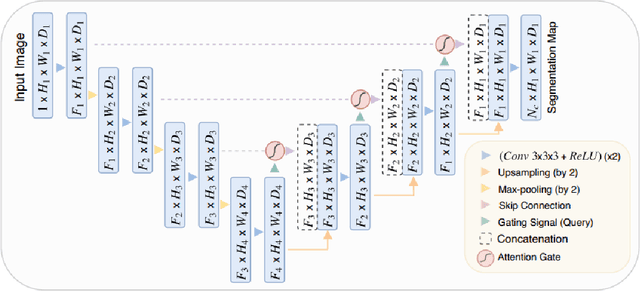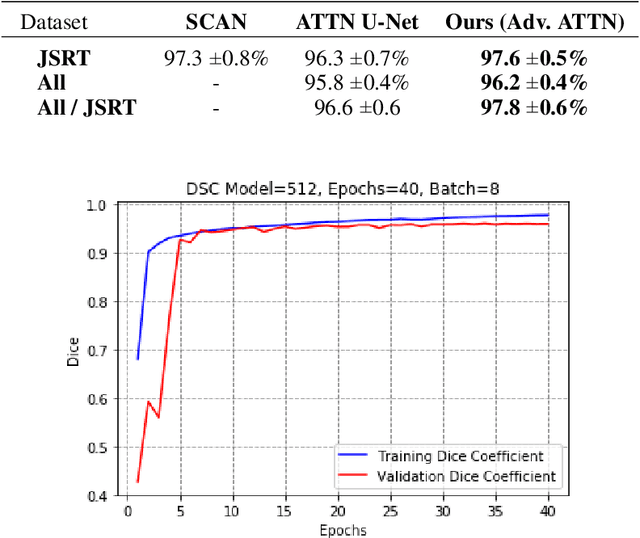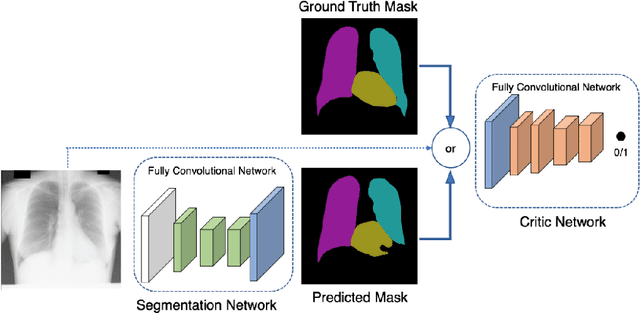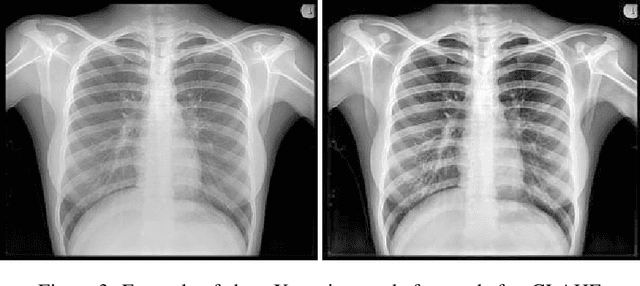Balázs Maga
Chest X-ray lung and heart segmentation based on minimal training sets
Jan 20, 2021



Abstract:As the COVID-19 pandemic aggravated the excessive workload of doctors globally, the demand for computer aided methods in medical imaging analysis increased even further. Such tools can result in more robust diagnostic pipelines which are less prone to human errors. In our paper, we present a deep neural network to which we refer to as Attention BCDU-Net, and apply it to the task of lung and heart segmentation from chest X-ray (CXR) images, a basic but ardous step in the diagnostic pipeline, for instance for the detection of cardiomegaly. We show that the fine-tuned model exceeds previous state-of-the-art results, reaching $98.1\pm 0.1\%$ Dice score and $95.2\pm 0.1\%$ IoU score on the dataset of Japanese Society of Radiological Technology (JSRT). Besides that, we demonstrate the relative simplicity of the task by attaining surprisingly strong results with training sets of size 10 and 20: in terms of Dice score, $97.0\pm 0.8\%$ and $97.3\pm 0.5$, respectively, while in terms of IoU score, $92.2\pm 1.2\%$ and $93.3\pm 0.4\%$, respectively. To achieve these scores, we capitalize on the mixup augmentation technique, which yields a remarkable gain above $4\%$ IoU score in the size 10 setup.
Attention U-Net Based Adversarial Architectures for Chest X-ray Lung Segmentation
Mar 23, 2020



Abstract:Chest X-ray is the most common test among medical imaging modalities. It is applied for detection and differentiation of, among others, lung cancer, tuberculosis, and pneumonia, the last with importance due to the COVID-19 disease. Integrating computer-aided detection methods into the radiologist diagnostic pipeline, greatly reduces the doctors' workload, increasing reliability and quantitative analysis. Here we present a novel deep learning approach for lung segmentation, a basic, but arduous task in the diagnostic pipeline. Our method uses state-of-the-art fully convolutional neural networks in conjunction with an adversarial critic model. It generalized well to CXR images of unseen datasets with different patient profiles, achieving a final DSC of 97.5% on the JSRT dataset.
 Add to Chrome
Add to Chrome Add to Firefox
Add to Firefox Add to Edge
Add to Edge